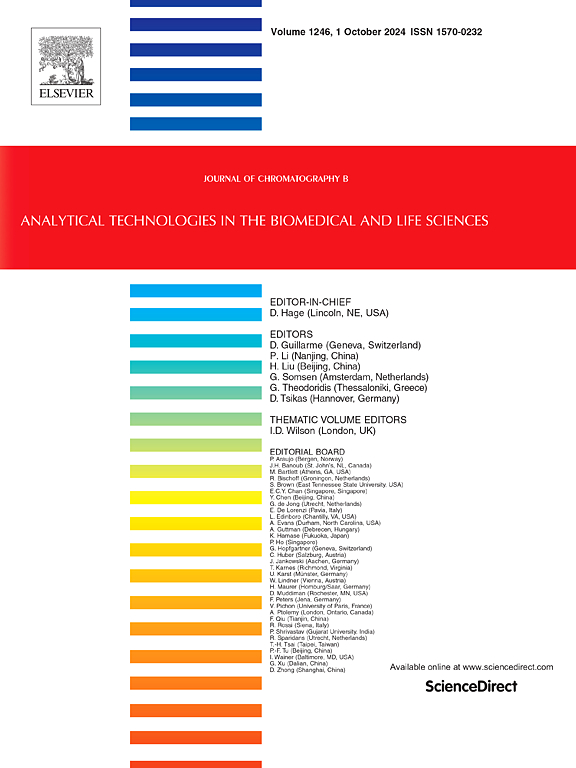Identification, synthesis, isolation, and characterization of formulation related degradation impurity of Cefadroxil Oral suspension
IF 2.8
3区 医学
Q2 BIOCHEMICAL RESEARCH METHODS
引用次数: 0
Abstract
Cefadroxil is an orally active, first-generation cephalosporin antibiotic utilized in the treatment of bronchitis, pharyngitis, tonsillitis, urinary tract infections, uncomplicated skin infections, bones, and joints (de Marco and Salgado, 2017 [1]). Cefadroxil for oral suspension is formulated as dry powder for oral suspension. After reconstitution during 14 days storage, we observed an unknown impurity at relative retention time (RRT) 1.29 in cefadroxil oral suspension. The observed level of an unknown impurity was greater than 0.1 % in high-performance liquid chromatography (HPLC) analysis. The present work is focused on the identification, synthesis, and characterization of the unknown impurity by employing several sophisticated analytical techniques. Such as High-resolution mass spectroscopy (HRMS), One dimensional (1D) and two dimensional (2D) nuclear magnetic resonance spectroscopy.

求助全文
约1分钟内获得全文
求助全文
来源期刊

Journal of Chromatography B
医学-分析化学
CiteScore
5.60
自引率
3.30%
发文量
306
审稿时长
44 days
期刊介绍:
The Journal of Chromatography B publishes papers on developments in separation science relevant to biology and biomedical research including both fundamental advances and applications. Analytical techniques which may be considered include the various facets of chromatography, electrophoresis and related methods, affinity and immunoaffinity-based methodologies, hyphenated and other multi-dimensional techniques, and microanalytical approaches. The journal also considers articles reporting developments in sample preparation, detection techniques including mass spectrometry, and data handling and analysis.
Developments related to preparative separations for the isolation and purification of components of biological systems may be published, including chromatographic and electrophoretic methods, affinity separations, field flow fractionation and other preparative approaches.
Applications to the analysis of biological systems and samples will be considered when the analytical science contains a significant element of novelty, e.g. a new approach to the separation of a compound, novel combination of analytical techniques, or significantly improved analytical performance.
 求助内容:
求助内容: 应助结果提醒方式:
应助结果提醒方式:


